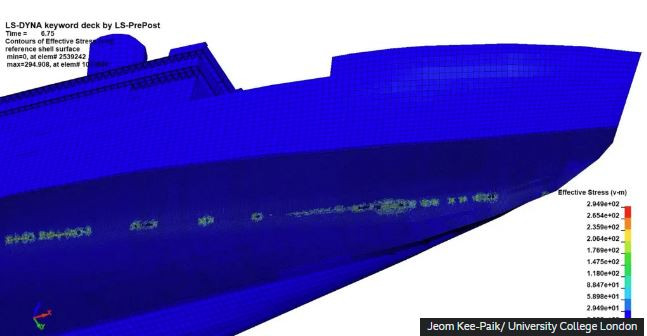New evidence for the last hours of oceanium – 3D replica confirms reports about what happened after the ship’s impact with the iceberg
An extremely detailed analysis of a complete digital scan of the “Titanic” has revealed new evidence for the last hours of oceanium.
According to the BBC, the 3D replica shows the extent of the violence by which the boat broke in two while sinking after a fatal collision with the iceberg in 1912 which led to the tragedy, with 1,500 passengers losing their lives.
Engineers worked until the last minute to stay open the lights open
The scan provides a new image of the boiler room, thereby confirming reports that engineers were working until the last minute to open the ship’s lights open. Computer simulation also indicates that cracks in the A4 Ground size hull led to its sinking.
“The Titanic is the last eyewitness to the remaining disaster, and still has stories to tell,” said Parks Stephenson, an analyst of the Titanic.
The scan was examined in the context of a new documentary by National Geographic and Atlantic Productions entitled ” Titanic: The Digital Resurrection ”.
The shipwreck, located at a depth of 3,800 meters in the frozen waters of the Atlantic, was recorded with underwater robots. Over 700,000 images from each corner were used to create the “digital twin” of the ship.
‘Like a crime scene’
Due to the size of the wreck and the bottom dark, its exploration provides only limited images- but the scan provides the first full floor plan of the ship. The bow is in good condition at the bottom, but within 600 meters the stern is an amorphous metal mass. The damage was caused as it fell to the bottom of the sea after the ship broke in the middle.
“It’s like a crime scene- you have to see the details, in the context of the place where they are,” Parks Stephenson said. “And an extensive picture of the entire shipwreck is key to understanding what happened here.”
The scan shows new details, including a finger that seems to have been destroyed by the iceberg- something that is in line with the testimonies of ice in some passenger cabins during the collision.
How did engineers keep the lights open
Experts were also studying one of the big boilers, which is easy to see on scanning. Passengers had said that the lights were still lit as the ship was plunged- and, according to the digital replica, some of the boilers seem to still work when they sank into the water. Still, a valve was found in a position showing that steam continued to be channeled into the electricity production system. This is probably due to engineers under Joseph Bell who continued to throw carbon at the furnaces to keep the lights lit – they were all killed, but that saved lives, Parks Stephenson said. “They kept the lights and stream in operation to the end, to give the crew time to download the boats safely in light and not in conditions of absolute darkness,” he told the BBC. “They held the chaos as much as possible, and all this is somehow symbolized by the open steam valve there in the stern.”
A new simulation also provides additional details on the sinking of the ship: it uses a detailed building block of the ship, created based on the “Titanic” plans and its speed, direction and location, to make predictions about the damage caused during the collision with the iceberg. “We have used advanced algorithms, computational models and overseas capabilities to reconstruct the sinking of the Titanic,” said Jeom-Kee Paik of University College London, who led the research.
The simulation shows that although the collision was sideways, the ship suffered a series of cracks along a narrow portion of the hull.
The ship was designed to remain at sea even if its four waterproof apartments were filled, but the simulation shows that six apartments were damaged. “What made the difference between whether or not the Titanic would sink into the size of the size of paper glue,” said Simon Benson, a Nautical Architecture Lecturer at Newcastle University. “But the problem is that these small holes are long, so the waters come slowly but steadily in all these holes, and then the apartments are filled and the Titanic sinks.”
Source :Skai
With a wealth of experience honed over 4+ years in journalism, I bring a seasoned voice to the world of news. Currently, I work as a freelance writer and editor, always seeking new opportunities to tell compelling stories in the field of world news.















